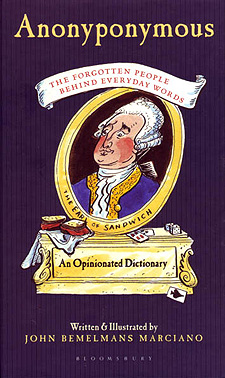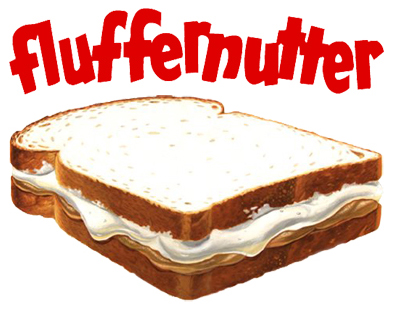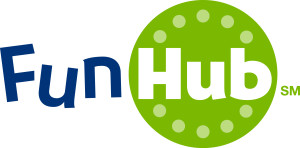War & Words
The National Museum of Language in College Park, MD is curating an exhibit on the role of the War of 1812 in the development of American English. (Thanks to the Visual Thesaurus for the tip)
The role of the museum is to promote a better understanding of language and its role in history, contemporary affairs, and the future. Orin Hargraves' post highlights some interesting history on the plight of Noah Webster to further separate his language from that of established Samuel Johnson.
From the Language Lounge on Visual Thesaurus:
Perhaps the greatest lexical victor of the war was the much older word spangled, which got promoted to a plush job that it will keep forever. Francis Scott Key, unavoidably detained on a ship in Chesapeake Bay on a September night in 1814 and compelled to watch the bombardment of Fort McHenry by Royal Navy ships, was moved to write the words that eventually became the national anthem. The epithet "star-spangled," interestingly, goes back to the 16th century but never seems to have been applied to anything but the sky until Key's moment of inspiration for the Star-Spangled Banner.
Recipe: Mini Potato Corn Cakes with Cheddar & Sour Cream
I'm always on the lookout for recipes that double as appetizers and side items. And this one combines many of my favorite ingredients!! I'll admit that I haven't made it yet; the thought of pan frying all those little patties makes me a little tired; I may try baking them instead.
Yield: 6 dozen appetizers
Prep Time: 25 min | Cook Time: 30 min
Ingredients:
2 cups Hungry Jack® Mashed Potatoes
1/3 cup Martha White® Yellow Corn Meal
1 tablespoon garlic salt
1/4 teaspoon cayenne or chipotle chile powder or to taste
1/2 cup very thinly sliced green onions
2 cups milk
1 cup shredded sharp or smoked Cheddar cheese
1 (12 oz.) bag frozen super sweet corn (2 1/4 cups), defrosted
Crisco® Olive Oil No-Stick Cooking Spray
1/2 cup sour cream
Preparation Directions:
-MIX potato flakes, corn meal, garlic salt and cayenne in medium bowl. Reserve 2 tablespoons green onion for garnish. Blend in remaining onions, milk, cheese and corn.
-SCOOP into sixty 1-inch balls, gently flattening into 1 1/2-inch patties. Heat a large nonstick skillet over medium heat. Spray with no-stick cooking spray. Pan fry patties until golden brown on both sides.
-SERVE warm with a tiny dollop of sour cream and a few slices of green onion on each, if desired.
The Etymology of Forgotton Folks

As namers, we use words like "neologisms," "hybrids," and "current usage words" with every project we work on. A neologism (from the French "new + body of knowledge") is a made-up word or something that has been coined for a specific purpose (ex: Aceba). A hybrid is two words fused together (ex: FunHub), while a current usage word is something you would find in the dictionary.
If you think about it, every word was at one point in time a neologism, a new word, something that someone made up. Someone had to fabricate it somewhere in history. Words become interesting parts of our vernacular when we have an association that gives them a new definition.
Anonyponymous: The Forgotten People Behind Everyday Words by John Marciano hits the shelves today, and takes a different approach at examining the origins of current usage words. Coining a word himself, John fuses "anonymous" with "epononym" to introduce a new word into our vocabulary; "anonyponymous" refers to eponyms that were created based on otherwise anonymous people in history. It provides some fascinating references to very obscure people (and moments) in history.
Read more
Candy Brands: Ferrara Pan
Friends and family will likely remember "Paula's Red Hot Marathon of 2006." No, it wasn't a fiery run; it was my shamless order of three cases of Red Hots direct from the manufacturer to be shipped to my door, and the consumption that ensued. I'm blaming the new baby hormones.
Red Hots have always been my candy of choice. There's something about that hot flavor getting stuck in my teeth that epitomizes how a candy should behave. And let me clarify: Red Hots are the BRAND; the generics are called cinnamon imperials. I've had the knock-offs, and believe me, there is only one Red Hot.
Ferrara Pan is the creator of the Red Hot, and the company brand has an interesting history. Created as a namesake for the founder, Salvatore Ferrara, Ferrara Pan was founded in 1908 in Chicago, Illinois. The word "pan" in the company name indicates that some of the candy they make is "panned". This process involves building candy pieces from single units, such as grains of sugar, nuts or candy centers, tossing them in revolving pans while adding the flavor, color and other candy ingredients. This process continues until the pieces become the desired size. Finally, the candy gets a high polish with an edible vegetable wax, which gives it an attractive appearance.
In terms of branding, the company has retained a functional, yet personality-infused continuity with its line of products: Red Hots, LemonHead, Atomic FireBall, Jaw Busters, Boston Baked Beans, Black Forest Gummies, and Ferrara Chocolates. With the exception of the Boston Baked Beans, I can look at their candy lineup and know exactly what I'm getting.
Check out the company's virtual tours of "How Panned Candy Is Made." And if you see a box (or bag) of Red Hots at the convenience store, pick one up for me.
PB & Fluff

As a self-proclaimed foodie, I'm excited to announce today is National Fluffernutter Day! Health nuts take heed: this fun-to-say day celebrates the unlikely fusion of the marshmallow brand Fluff with peanut butter (brand of choice), typically served on white bread.
According to Wikipedia, "Fluffernutter" is a registered trademark of Durkee-Mower Inc., the maker of "Marshmallow Fluff" brand marshmallow creme. However, Durkee-Mower's US trademark registrations for Fluffernutter cover only ice cream and printed recipes. In 2006, Durkee-Mower sued Williams-Sonoma Inc. in the United States District Court for the District of Massachusetts, alleging that Williams-Sonoma was selling a marshmallow and peanut butter chocolate-covered candy under the "Fluffernutter" name."
This unique combination was recently nominated as the state sandwich of Massachusetts. If Massachusetts gives the honor to the Fluffernutter, it will become the only state with a sweet official sandwich.
Carnival Introduces FunHub

Carnival Cruise Lines debuts its Dream ship this fall with a 12 day Grand Mediterranean Cruise departing from Rome. Onboard this grand ship will be the company's latest innovation, dubbed the FunHub, a comprehensive shipboard intranet portal featuring the cruise industry’s first on-board social network. The portal provides access to a wide variety of information on the ship’s services, facilities and daily activities. FunHub will allow guests to create online profiles, meet and interact with other guests, send and receive messages, check menus and weather reports, and more. Available free of charge 24 hours a day, the FunHub will serve as a resource to keep guests connected to everything related to their cruise experience.
Check out more on the Dream ship featuring the new FunHub portal here.
Did slot miss their shot?
Remember mixed tapes? The old school cassettes made for friends containing your favorite songs, with clever titles such as "Road Trip Mix 91"?
Fast forward 20+ years and enter slotRadio. From the looks of their advertising, the new music player + music card is targeting moms ... busy moms in particular (although really, what mom today ISN'T busy?). I fall into this category, and it seriously took reading the ad several times plus a visit to their website to help me understand exactly WHAT they were selling. Is slotRadio a music player? Actual music? A big idea?
It's really all three. slotRadio is a music player, with special "pre-filled" cards loaded up with music from specific categories. For example, I can choose a card with 1000 country-specific songs ready to play in my slotRadio player. Or a health and fitness card that has seven playlists created with specific activities in mind (cardio, cooldown, yoga, etc.). Great concept. Appropriate target. So what's the problem?
The name. slotRadio. Sure it's descriptive. Yes, it's functional. But this is a category definer. No other manufacturer has a product like this. Imagine if Procter & Gamble had chosen to use "Dust-Trapping-Cloth-on-a-Stick" for their inventive product in 1999.
To make things even more confusing, the pre-loaded cards are branded slotRadio, as is the player. But the slotRadio card can actually be played on the Sansa Fuze and the Sansa Clip+. Seems to me a better option would have been to name the player slotRadio, and give the card (new, unique, different) a (new, unique, different) name.
Apple defined the personal music category with the iPod. Now SanDisk has a chance to redefine the playlist. Unfortunately I think the choice of name leaves the door wide open for a second player to come in and dominate with a more original brand name.
Theravance and Astellas Announce FDA Approval of VIBATIV(TM) (telavancin)
Vibativ was recently approved by the FDA for the treatment of complicated skin and skin structure infections.
"We are very pleased with the FDA's approval of VIBATIV, and extremely excited about the prospect of bringing this new medicine to the market," said Rick E Winningham, Theravance's Chief Executive Officer. "This is a significant event that marks the first approved indication for VIBATIV and validates Theravance's strategies in drug discovery and development. We believe that VIBATIV will become an important medicine addressing the urgent medical need for new antibiotics to treat Gram-positive infections caused by MRSA."
Brand Your Bugs
As consumers are looking for more natural solutions to implement within their lives and specifically within their healthcare choices, probiotics are emerging as a hot new trend. Probiotics (translated as "for life") refers to the "good" bacteria that are included in dietary supplements or food products.
This "good" bacteria found in our adult bodies has been shown to assist with digestion, produce vitamins, regulate the immune system, and help the body stave off the "bad" bacteria. The dominant population consists of strict anaerobic bacteria: Bacteroides, Bifidobacterium, Eubacterium and Peptostreptoccocus.
Consumer companies are getting into the bug business by branding and marketing specific strains of this good bacteria as an ingredient brand in their yogurts, juices and supplements.
Take a look at some current offerings:
- Align has a new presence in the media by touting its "Bifantis," which is a neologism that truncates the scientific name of the bacteria: Bifidobacterium infantis 35624.
- Activia has been on the market for several years and recently utilized Jamie Lee Curtis as the "Activia Lady." Their primary ingredient is "Bifidus Regularis" from the Bifidobacterium animalis DN-173 010 strain.
- NakedJuice bypasses the direct reference to bacteria altogether and uses simply "Probiotics" on this product within their lineup. It's interesting that they refer to probiotics as the "friendly, live active cultures."
- Attune Foods offers two probiotics bars, and takes it a step further by reinforcing the idea of a daily nutritional value with "daily probiotics."
- Bio-K+ utilizes a strictly scientific approach, through both their core brand name and the product names. CL1285, available in capsule, fermented milk, and dairy free forms, is a bacterial probiotic culture containing the unique and patented formula of L. acidophilus and L. casei.
- Finally, check out GoodBelly Yogurt & Juice. These products use the mark "Lp299v," which refers to Lactobacillus plantarum 299v. No emotional benefits present in this ingredient name; the company uses their core brand to communicate the end result of the product.
What do you think? Does branding bacteria with an emotional name versus a scientific one make you more inclined to try a probiotic product?
Infomercial Brands: kiNOki
Google “infomercial foot pads” and the first page of search results speaks to immense customer dissatisfaction and charges of false claims with this “Japanese-based” product.
Billed as the “ancient Japanese secret to perfect health,” the Kinoki Detox Foot Pads claim to detoxify your body while you sleep through small pads that you place on the soles of your feet. And even though the FTC has charged the manufacturers with deceptive advertising, the name of the product is interesting from a structural perspective.
Take a look at the balance of the name as it begins and ends with the letters “ki”. Several sources cite “ki” as referencing energy or spirit. The letters are noted as the name of the Sumerian goddess of the Earth, and the phonetically similar “Qi” in Japanese connotes a life force or spiritual energy. All positive associations for a product that is supposed to renew and refresh your energy by ridding your body of negative toxins. Oh, oops, the company embedded the letters “no” within the reference of a balanced life force. Guess they were telling us the truth after all.
